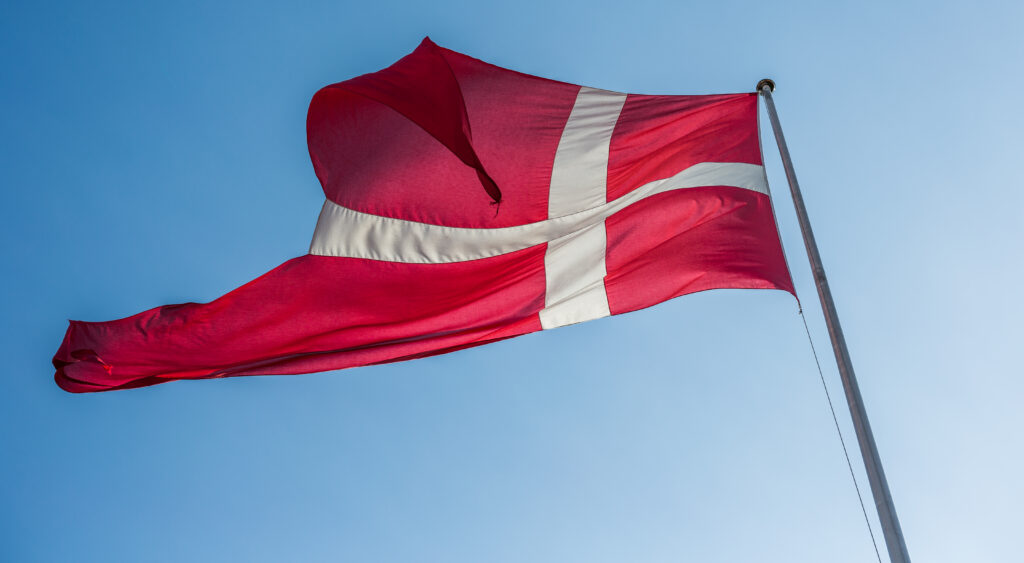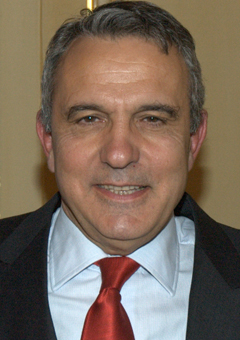Analyses / Europe, European Union, NATO
30 September 2025
Drones in Danish skies: what security perspectives?

Danish airspace was violated by an initial flight of an unidentified drone over Copenhagen Airport on 22 September 2025, and then again several times during the week above airports and military sites. Denmark was forced to close several airports for random durations, implement surveillance measures and launch an investigation to determine the nature of these drones and the origin of their operators. Since no drone has been captured or shot down, there is significant uncertainty over the type of craft involved. In any case, even a small drone poses a danger to air traffic (engine ingestion, collision) and a security concern (carrying explosives, intelligence gathering). The effects of these intrusions are not genuinely military but fall within the realm of hybrid threats.
The targeting of Denmark may have a geostrategic rationale: Denmark controls the straits providing access to the Baltic Sea and thus to Russian ports. Yet given the means employed, such an objective follows no military logic.
The reason is more likely political: Denmark holds the presidency of the Council of the European Union from 1 July to 31 December 2025 and, in that capacity, is organising an informal meeting of the Council (27 heads of state and government), to be followed by a meeting of the European Political Community bringing together, alongside the EU, 46 states. It is therefore certain that those responsible for these unlawful overflights had something to say to these political leaders, conveniently gathered in one place, by disturbing the serenity of their debates.
These debates will precisely address “Europe’s common defence and support for Ukraine”. Russia and Ukraine will therefore be at the heart of the discussions.
Russia’s objectives may be to try, by extending aerial intrusions, to divert European military efforts in favour of Ukraine, particularly regarding air defence. For coordinated intrusions, sustained over time across numerous European airports, would seriously disrupt air traffic and therefore the European economy. Another aim could be, after the unanimous and determined reactions of European politicians pledging to defend their common airspace following the penetration of Polish airspace by around twenty drones, to demonstrate the limits of such a commitment by deliberately and with impunity violating European airspace. The Russian hypothesis is therefore logical, especially given the presence of three Russian civilian vessels sailing nearby that week.
But networks supporting the Ukrainian cause may also have sought to influence and energise European support by showing how drone overflights can be unsettling, even if they do not drop explosives. The modus operandi of Operation Spider Web or the sabotage of Nord Stream shed light on this hypothesis.
Let us continue, for strategic assessment requires an inventory of all hypotheses. One more family of actors must not be ignored: the extreme political movements contesting state authority in Western countries in the name of anti-capitalism, the defence of this or that cause, and an endless list of “converging struggles”. Recall how, for over 25 years, every NATO, EU or G7 summit was first disrupted, then placed under extreme security to prevent particularly violent protests. The drone today offers these actors a new modus operandi, projecting onto decision-makers a threat that the police do not yet know how to counter.
In conclusion, the drone, which has gained a major role in military operations—first during the Nagorno-Karabakh war, then exponentially during the Russo-Ukrainian war, to the point of occupying almost the entire field of operations at all tactical, operational and strategic levels—has now made a spectacular media entry into the field of hybrid warfare and domestic security.
What strategy to counter these violations?
These flights over Denmark are not aggressive in the sense defined by the United Nations, but unlawful[1]; it is the use of force that defines aggression and allows self-defence, and thus firing, authorised under Article 51 of the Charter. Since drones carry no crew on board and ownership is not claimed, they may be shot down, provided the fall of debris does not endanger populations.
The case of manned aircraft raises a different problem. But firing is recognised in law when behaviour is aggressive (failing to comply with orders from air policing, threatening it by manoeuvres, carrying armaments, etc.). What remains is to define the level of decision-making in the politico-military hierarchy, which has been established for France[2] as for NATO. In 2024, NATO forces intercepted nearly 400 Russian flights worldwide to steer them back onto the “right path”, but without encountering any aggressive act that would entitle them to open fire. For their part, the Russians intercepted around 370 NATO aircraft. These interceptions mostly took place at the outer edges of the interceptors’ airspaces.
Last week, Donald Trump and Mark Rutte in echo announced that NATO should shoot down Russian aircraft crossing European borders, and many European politicians echoed this. The German minister, however, considered these statements counterproductive. Shouting out such reckless threats indeed is. The text of the North Atlantic Council is clear: “NATO and the Allies will employ, in compliance with international law, all military and non-military tools they deem necessary to defend themselves and to ward off all threats, wherever they come from.” International law, as recalled above, applies.
So what should be done?
- Keep calm and take a step back before communicating orbi et urbi, and remember Sun Tzu’s advice that Putin seems to apply against NATO: “Irritate his general and mislead him.”
- Apply international law to police the skies over European territory: it provides the tools, including by force, to counter aggressive acts.
- Without delay, develop the necessary complements to NATO’s Integrated Air and Missile Defence System (NATINAMDS), particularly in the lower layers where drones operate. The EU’s anti-drone net is expected by June 2026, at least in its detection component.
- Invest in and support all companies working on anti-drone weapons (radio and GPS jamming, electromagnetic pulse cannons, blinding or destructive lasers, weapons of all calibres).
- Develop self-defence systems across the full depth of the territory and at all airports and sensitive facilities (national anti-drone mesh).
- And never lose sight that the flexibility of use and the difficulty of locating and thus identifying the operator opens an infinite field of unlawful and criminal uses, in addition to a distant enemy. Anti-drone efforts therefore require, at the European level, synergy among all state services and active citizen contribution (detecting pilot stations).
[1] “Aggression is the use of armed force by a state against the sovereignty, territorial integrity or political independence of another state, or in any other manner inconsistent with the Charter of the United Nations, as set out in the present definition.” UN General Assembly Resolution 3314, 1974.
[2] The Prime Minister, represented by the High Air Defence Authority (HADA), is responsible for the order to open fire.

